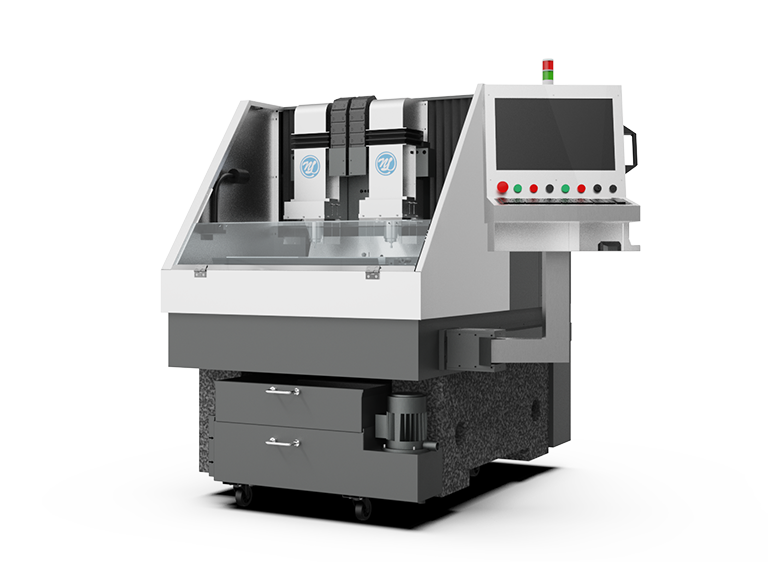ND Glass Engraving Machine is a high-precision and high-efficiency processing equipment that utilizes CNC technology to process crystal materials. Crystal CNC precision engraving machines can perform various processing methods such as milling, grinding, polishing, scraping, hole processing, chamfering, etc. on crystal materials according to preset programs, achieving control and optimization of the shape, size, surface quality, and performance of crystal materials.

Basic Properties of Optical Crystals
1) The properties and arrangement of internal particles in different parts of a homogeneous crystal are the same, and the physical and chemical properties exhibited are also completely the same. This uniformity is a fundamental condition for optical crystals to be used as optical materials.
2) The optical properties of anisotropic crystals often vary with the direction of the beam, and this anisotropic characteristic is manifested in the form of birefringence. The degree of birefringence varies regularly with the direction, which is precisely what is required for the use of optical crystals.
3) The symmetry of a crystal is characterized by the regular repetition of properties with the same symmetry in different directions or positions. The symmetry of crystals often requires consistency in the symmetry of manufacturing optical components.
4) Autonormity refers to the property of a crystal that spontaneously forms a closed geometric polyhedral shape. This autonormity is the result of the regular accumulation of lattice structures in three-dimensional space, where each outermost node, row, column, and surface network always appears as regular points, lines, and surfaces, thus forming a regular geometric polyhedron shape.
5) The thermodynamics of minimum internal energy indicates that for objects with the same composition but different phases, crystalline matter has the minimum internal energy. The so-called internal energy refers to the sum of the kinetic energy of irregular motion of particles inside an object and the potential energy determined by the mutual positions of particles. The minimum internal energy of the crystal indicates the accuracy and stability of the mutual positions of crystal particles.
6) The stability of a crystal is the degree to which its performance is stable over time. The good stability of crystals is an inevitable result of minimum internal energy. It is precisely because the internal energy of a crystal is the smallest that it cannot spontaneously transition to other states, that is, the crystalline state is a relatively stable state, and the crystal has stability
Optical properties of crystals
1) The transmittance range of optical crystals is usually much wider than that of optical glass. Although optical crystals can be divided into ultraviolet optical crystals, visible optical crystals, and infrared optical crystals according to their different working bands, each type of optical crystal still has a wide band range. Usually, light element compound optical crystals have a wider band in the ultraviolet region, while heavy element compound optical crystals have a wider band in the infrared region.
2) Low absorption optical crystals not only have a much wider transmittance band than optical glass, but also have much smaller absorption of light. The absorption of light by optical crystals also exhibits anisotropy, and the degree of absorption varies with the direction of the incident light wave vibration.
3) Another difference between low dispersion and glass is that the refractive index of optical crystals changes less with wavelength, which means that the dispersion of optical crystals is relatively small. Optical systems made of silicon (Si) or germanium (Ge) used for infrared optics require almost no correction for color differences.
4) Birefringence: Except for the equiaxed crystals of the advanced crystal family, which are isotropic and do not produce birefringence, all six other crystal systems are anisotropic. When a beam of light propagates in any direction outside the optical axis, it will generate birefringence and exhibit regular changes.
5) Some optical crystals exhibit optical rotation when plane polarized waves propagate along the optical axis.











